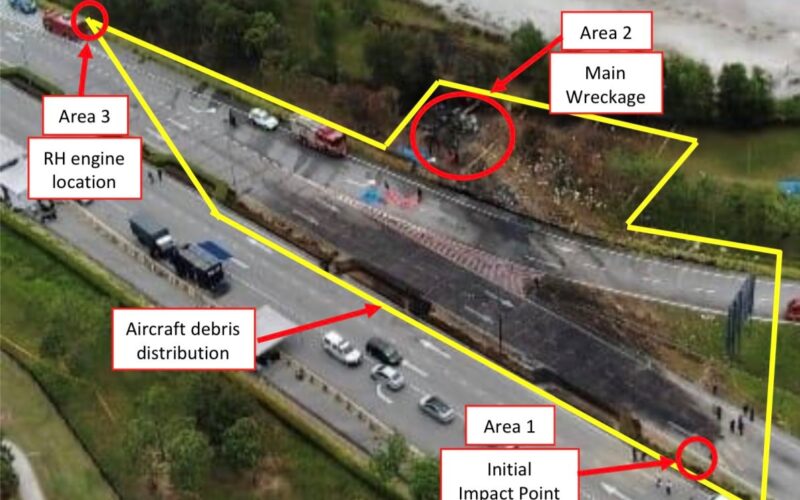The Malaysian Air Accident Investigation Bureau (AAIB) has released a preliminary report about the catastrophic private jet crash on August 17, 2023, in Elmina, Malaysia, that killed eight people on board the flight as well as two bystanders.
The report, published on September 15, 2023, advised that the flight recorder had provided “critical leads” to uncovering the cause of the accident with a “focus on the aircraft flight control systems”.
The AAIB had claimed that there had been some problems downloading the data from the flight recorder, but a specialist team at the L3Harris Technologies facility in St Petersburg, Florida, was able to extract valuable information.
The AAIB advised that a transcript of the recording will be released in the final report.
Other preliminary findings published in the report included details about the pilots and the Hawker Beechcraft 390 Premier 1 aircraft’s conditions.
The report revealed that the pilot in command (PIC) was a 41-year-old Malaysian man with over 6,000 flying hours and the other pilot was a 44-year-old Malaysian man with over 9,000 flying hours.
According to the AAIB, the PIC was licensed and qualified for the flight in accordance with existing regulations. The aircraft also had a valid Certificate of Airworthiness and had been maintained in compliance with the regulations.
Importantly, the incident happened during the day, with reported clear visibility and fine meteorological conditions. There was no evidence of incapacitation or physiological factors that affected the flight crew’s performance.
The AAIB also noted that the PIC was said to be well the night prior to the accident, and that a witness also suggested that he had a good rest before the flight departing from Langkawi.

The AAIB found that the main wreckage came to rest about 73 meters from the first impact of the aircraft on the ground and that a “massive post-crash fire engulfed the aircraft immediately after the collision”.
According to the visual and field analysis, the aircraft right wing tip impacted on the solid ground first and was immediately followed by the nose at “high energy”.
The short duration acceleration typically observed in high energy collisions then led to fatal injuries of the aircraft occupants.
The report said: ”This level of impact forces, collision pattern and magnitude were beyond the limit of human tolerance indicating that this was not a survivable accident.”
In an accompanying statement with the report, the Malaysian Transport Ministry said: “The ministry wishes to express its gratitude to NTSB and also Singapore’s Transport Safety Investigation Bureau (TSIB) for assistance rendered to AAIB’s investigations through their respective accredited representatives, along with their technical advisors.”
On the day of the incident, the private jet left Langkawi International Airport (LGK) on the paradise island of Langkawi at 2:08 pm local time and was due to land at Sultan Abdul Aziz Shah Airport (SZB).
At 2:48 pm the aircraft was given landing permission. However, at 2:51 pm Suban Air Traffic Control tower observed smoke rising from the crash site. No mayday call was made by the aircraft.
Six passengers, two crew members, a motorcyclist and a cab driver were all killed as a result of the crash.

